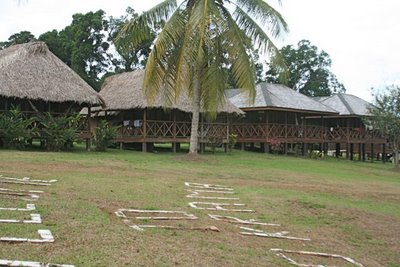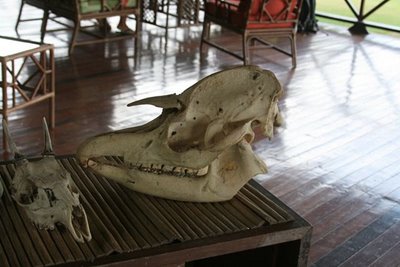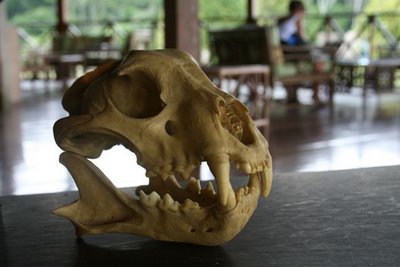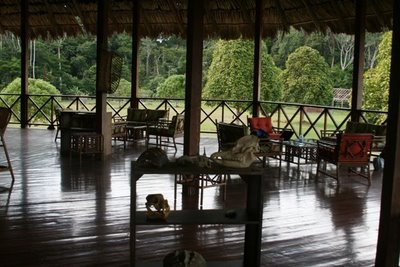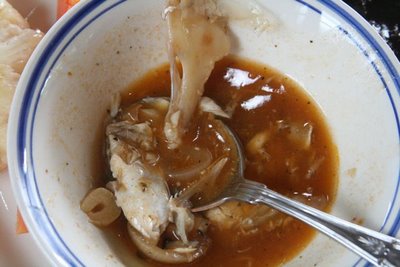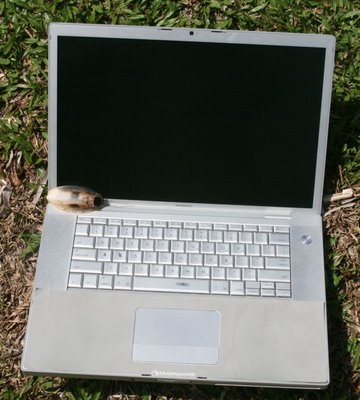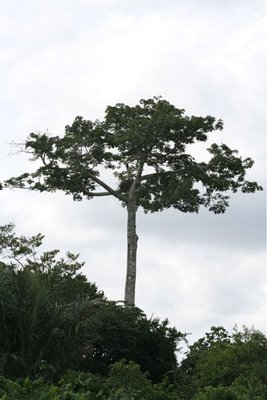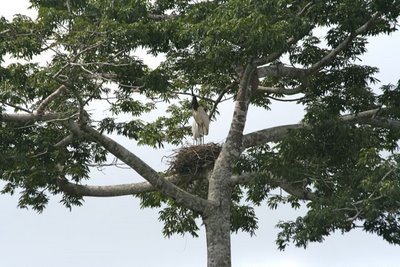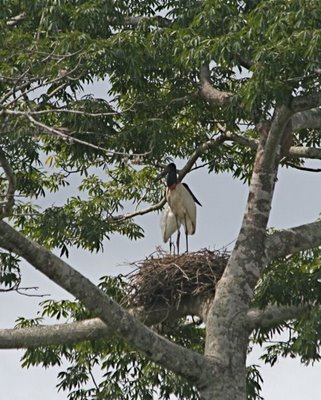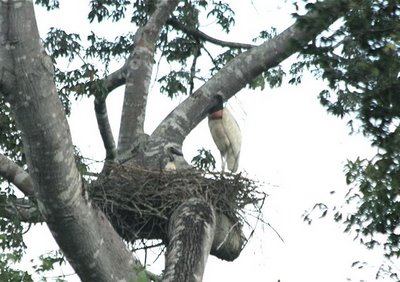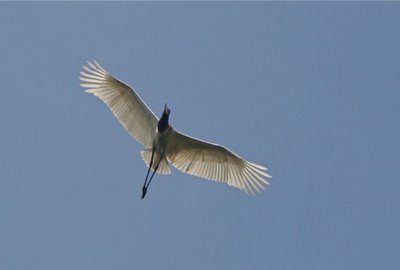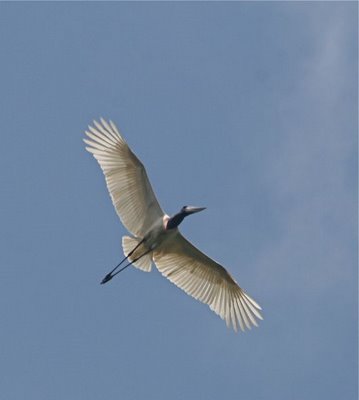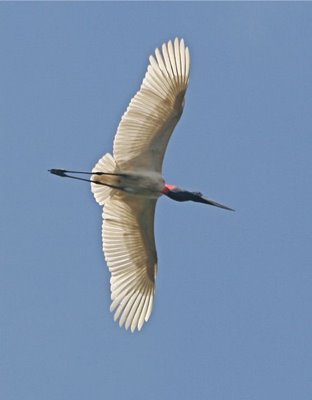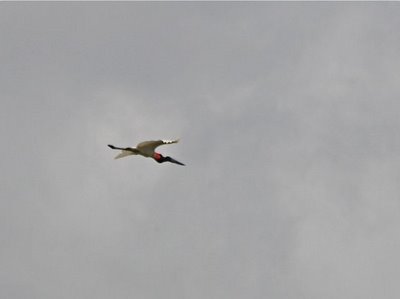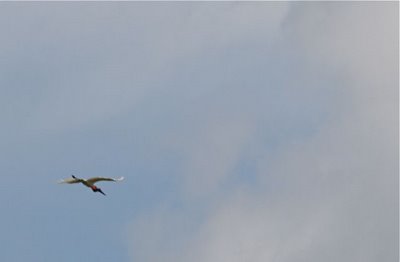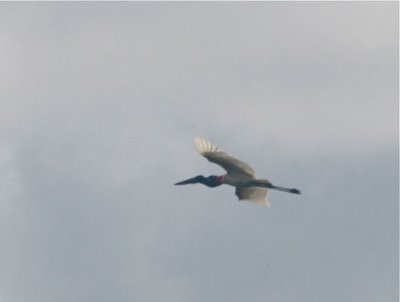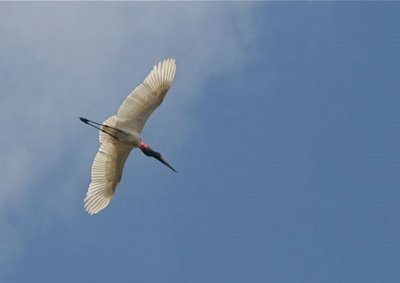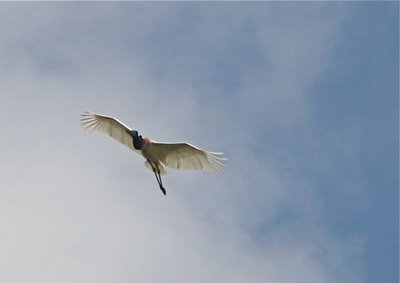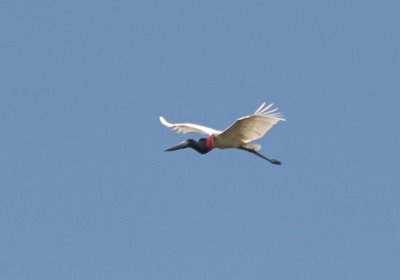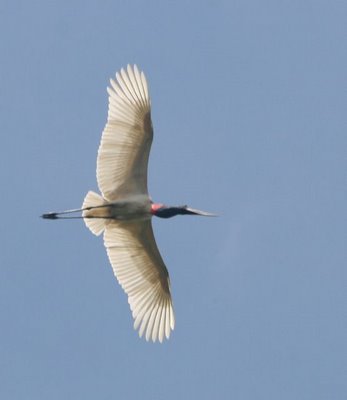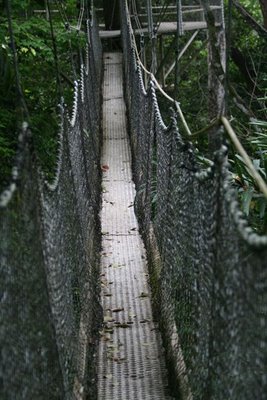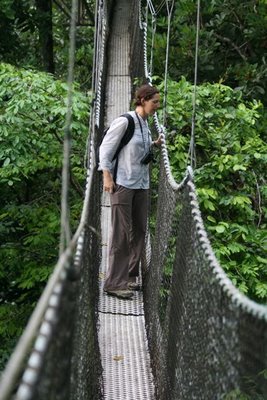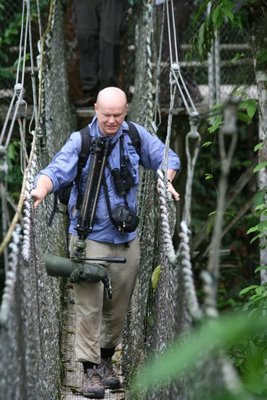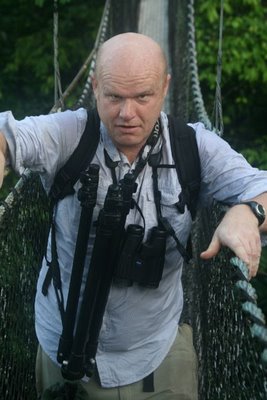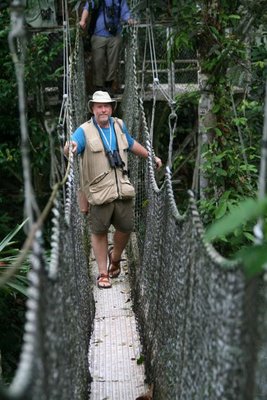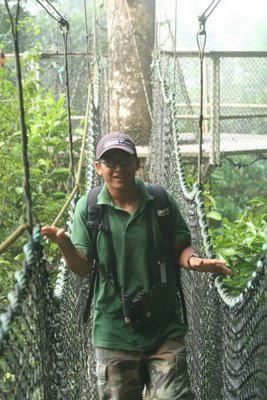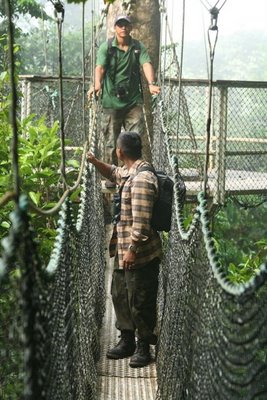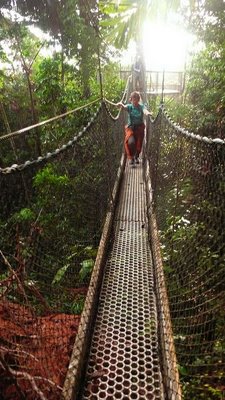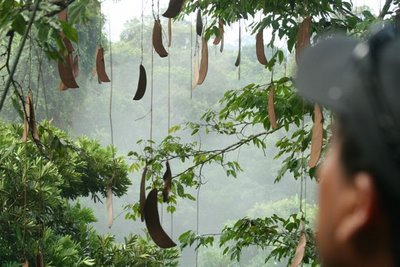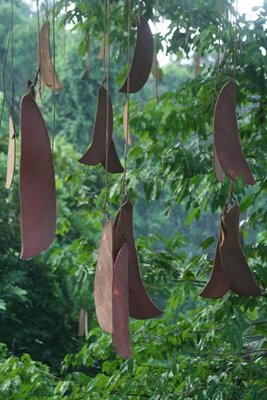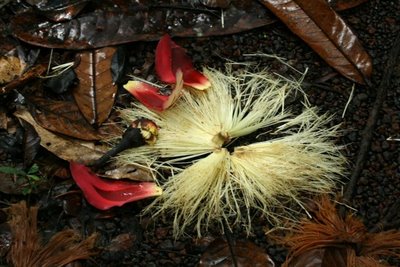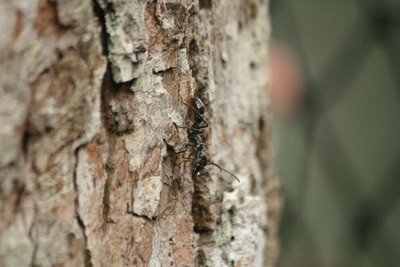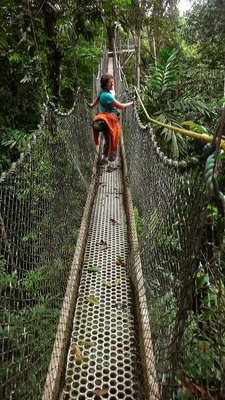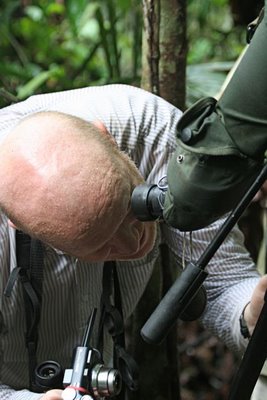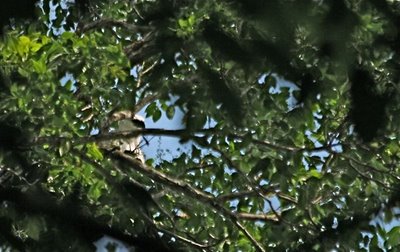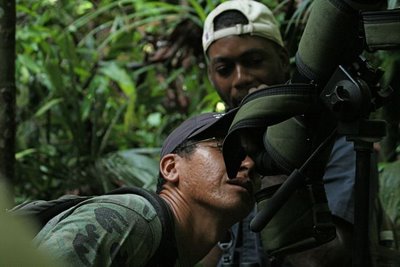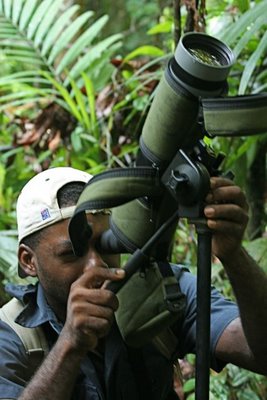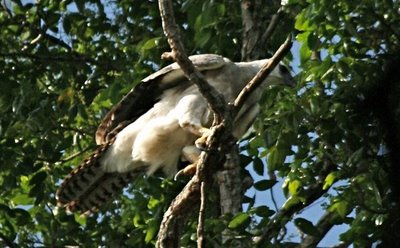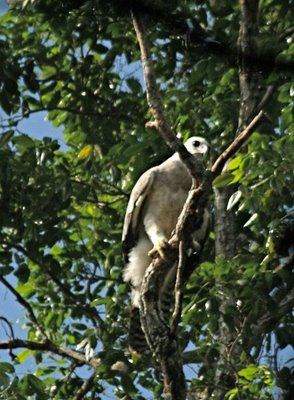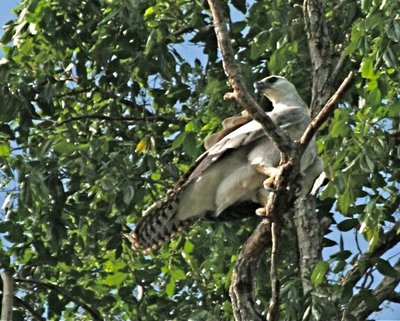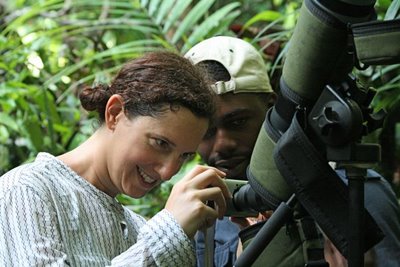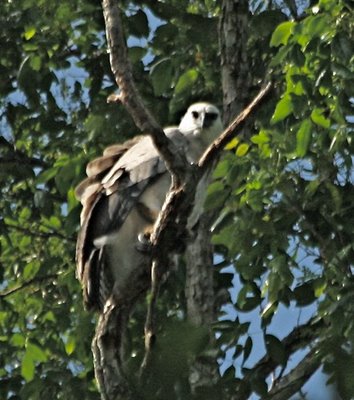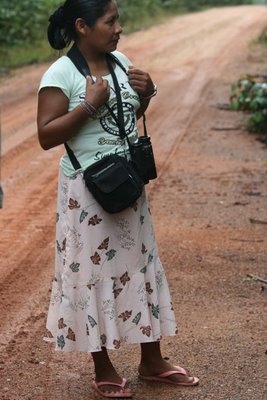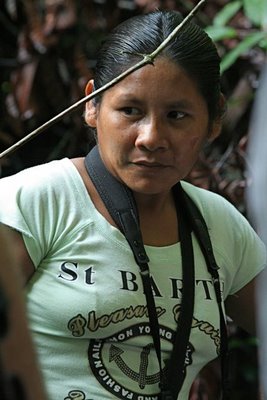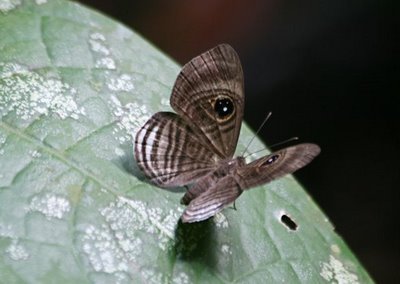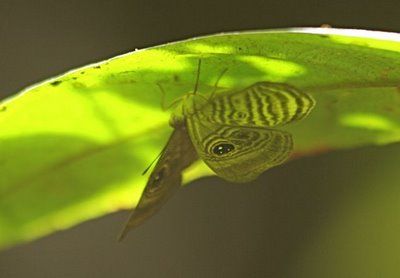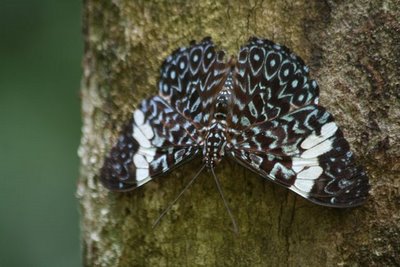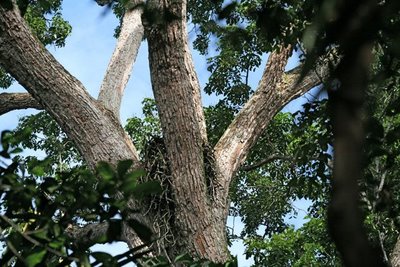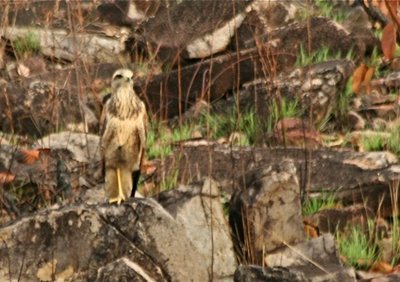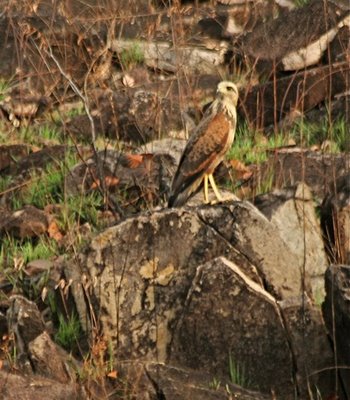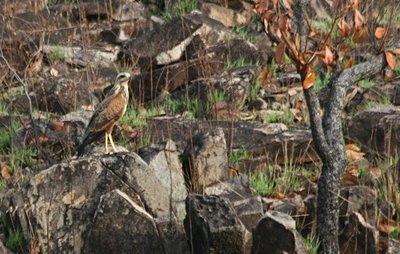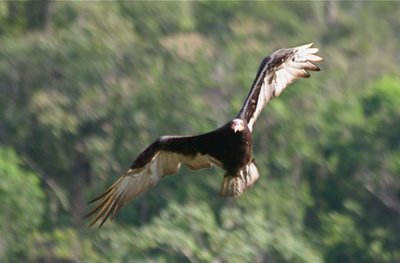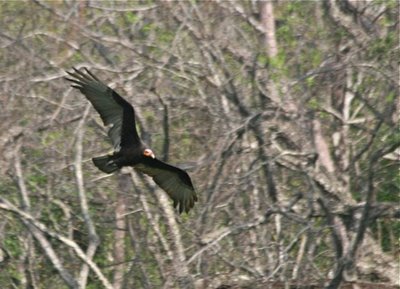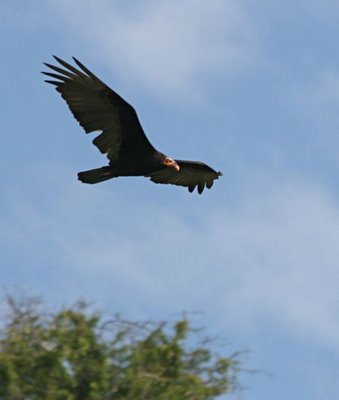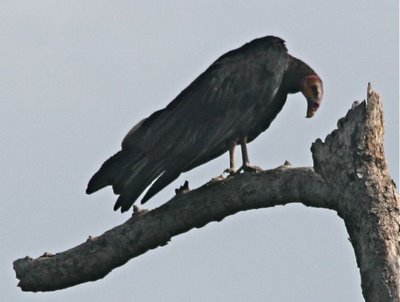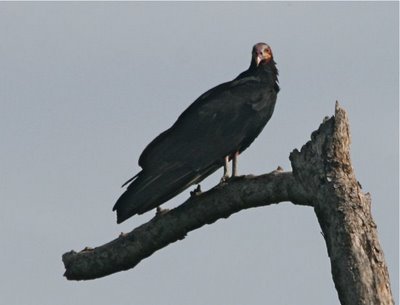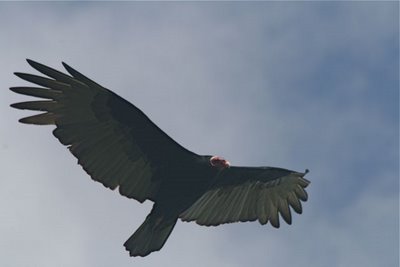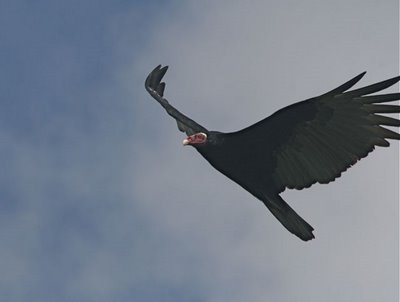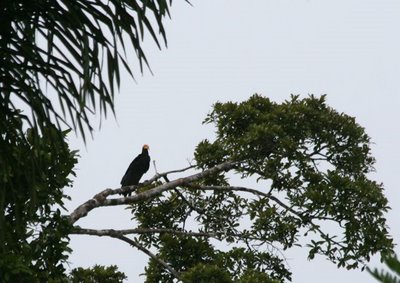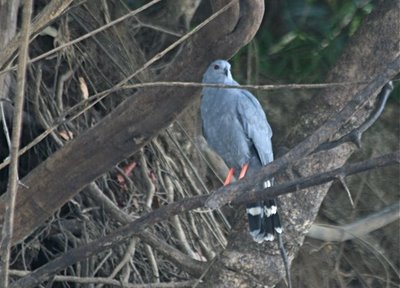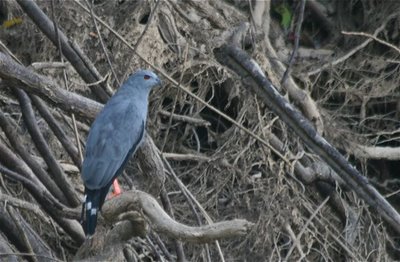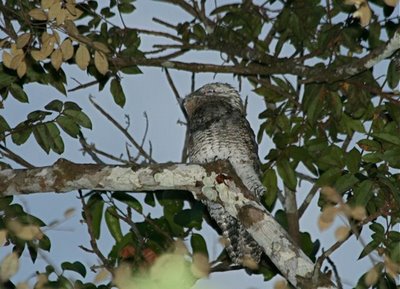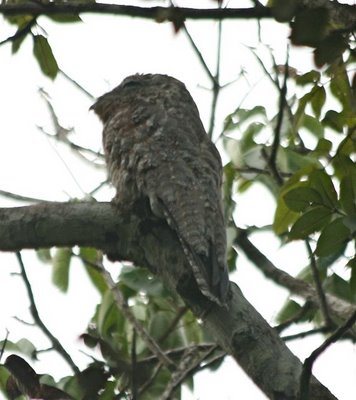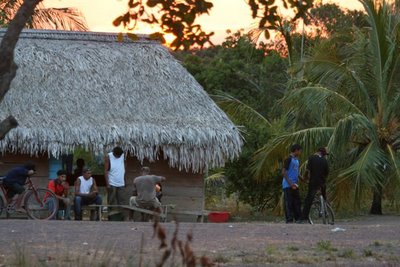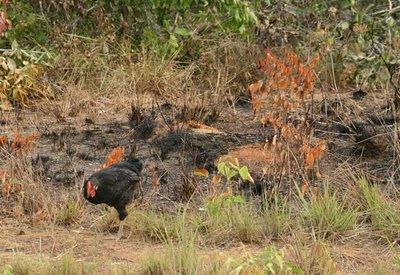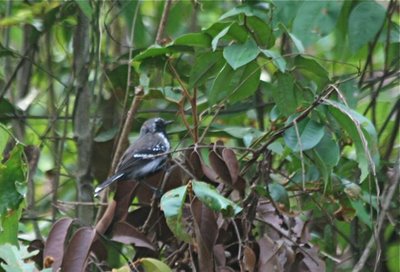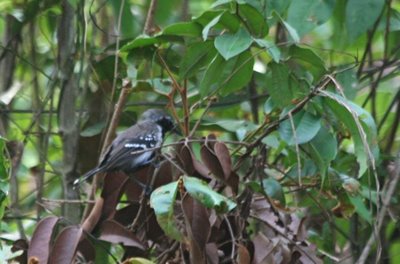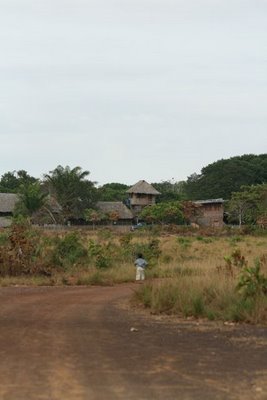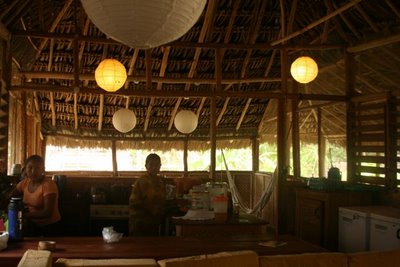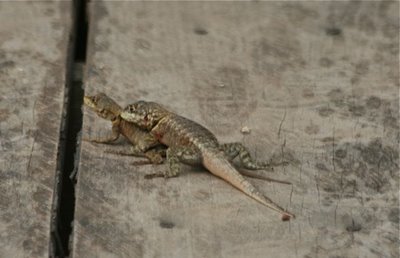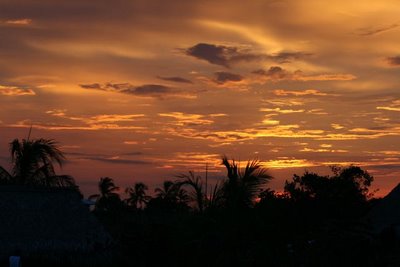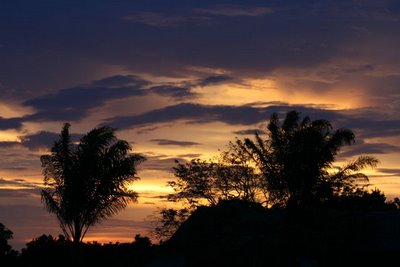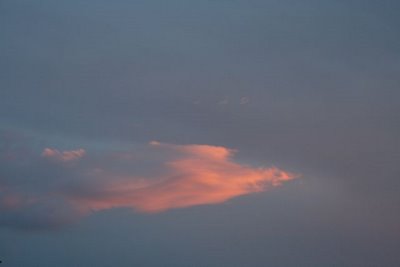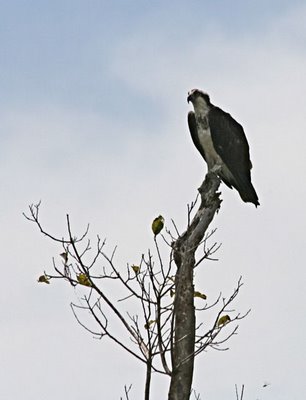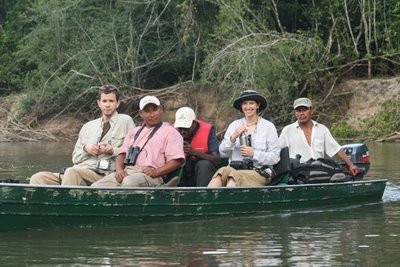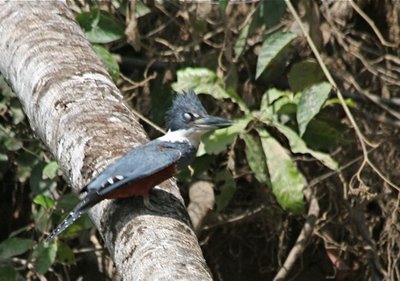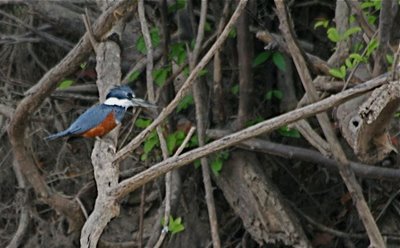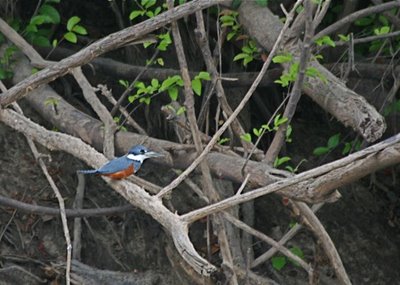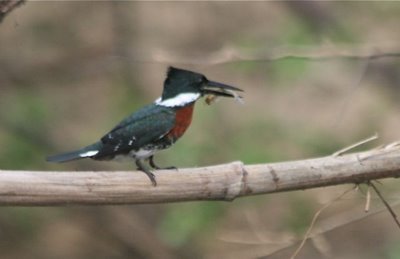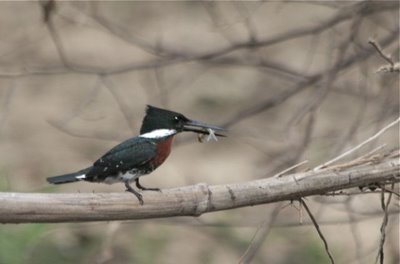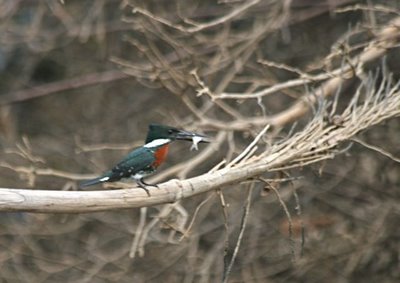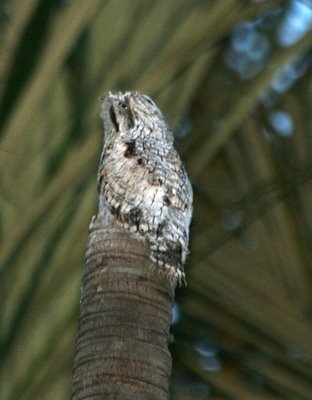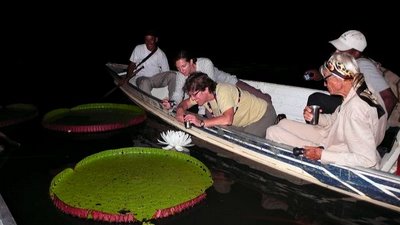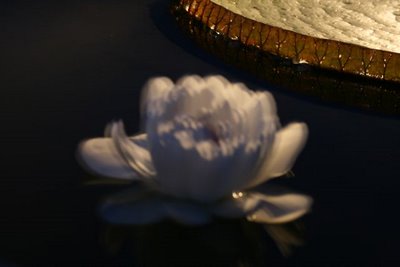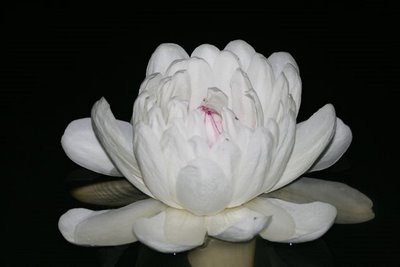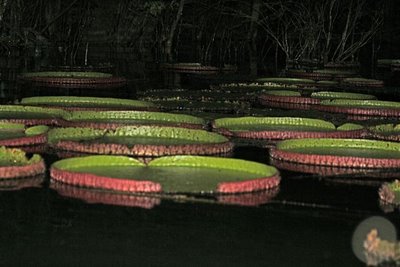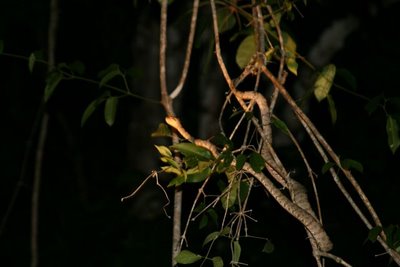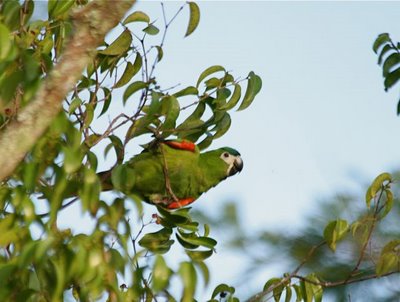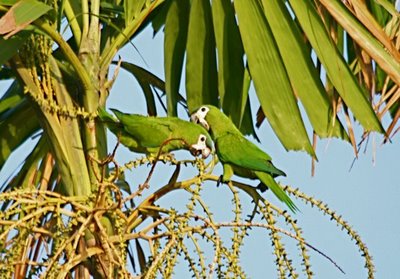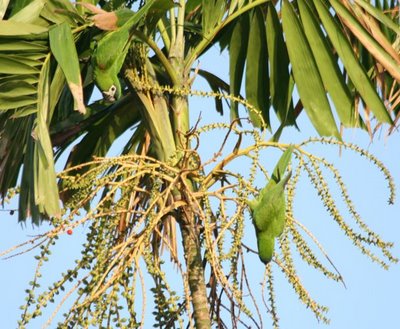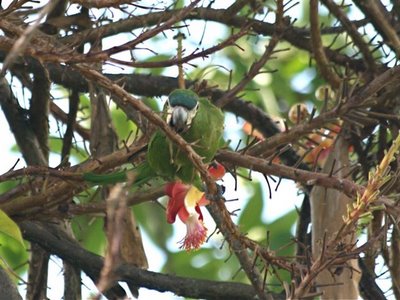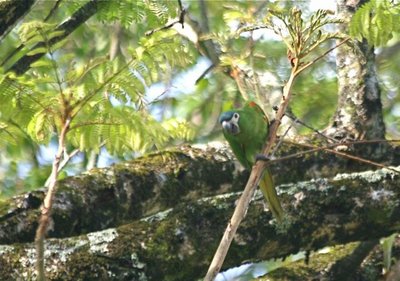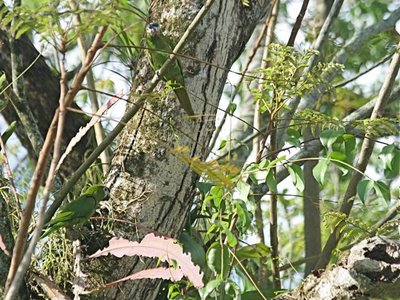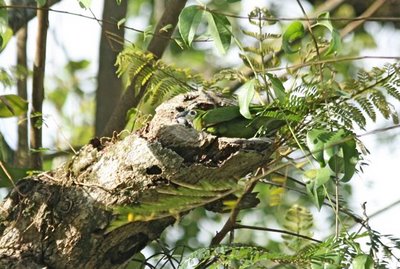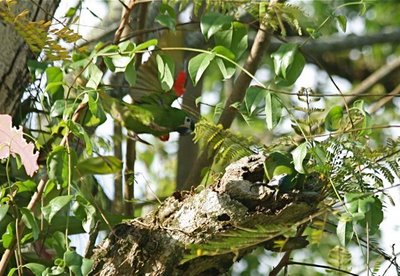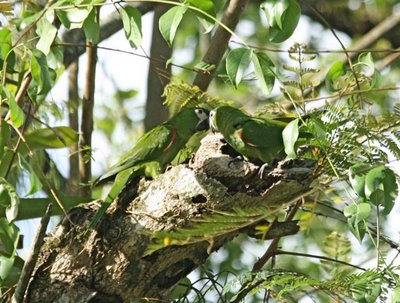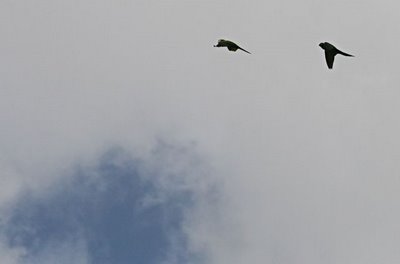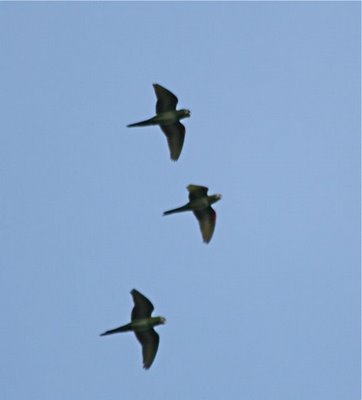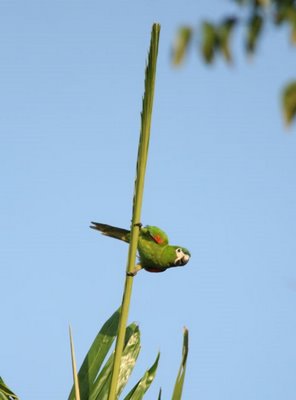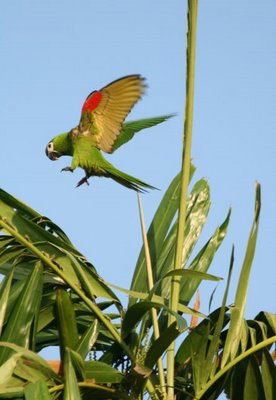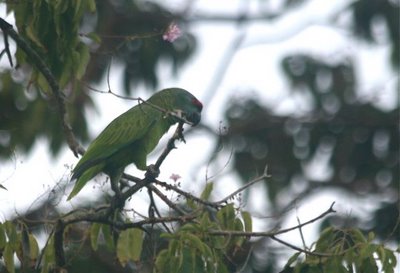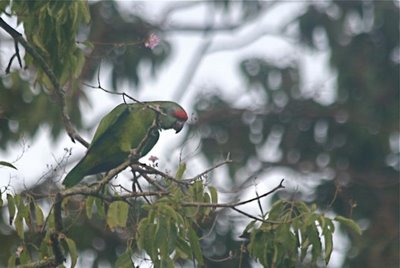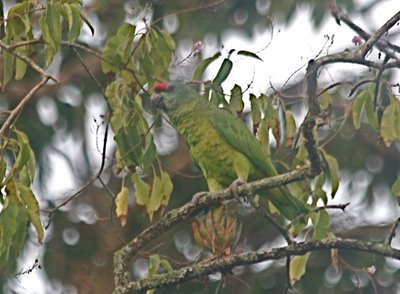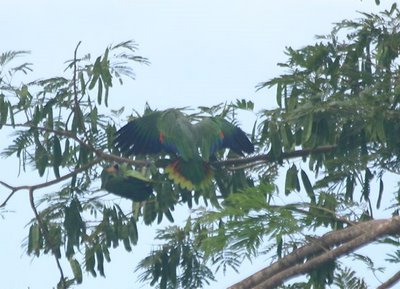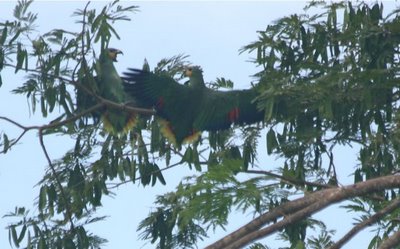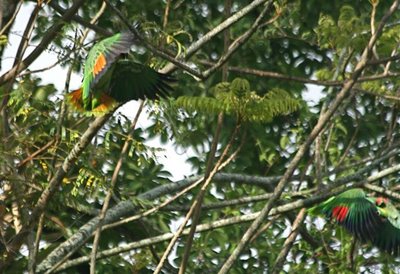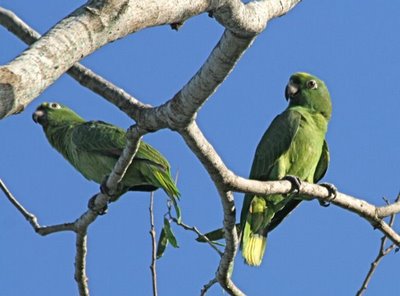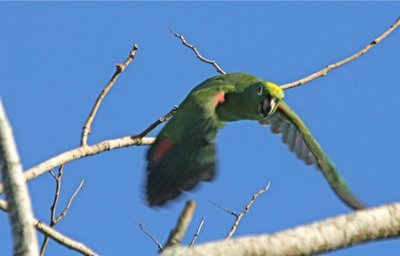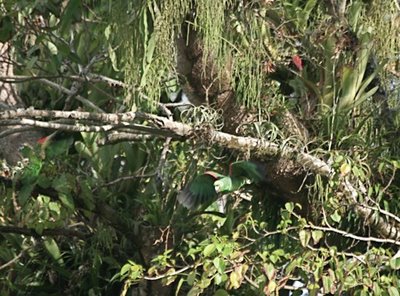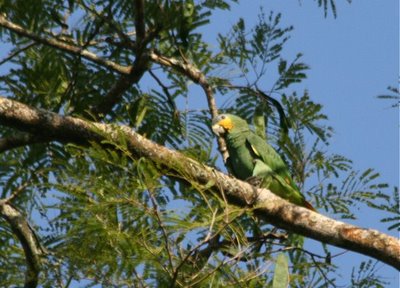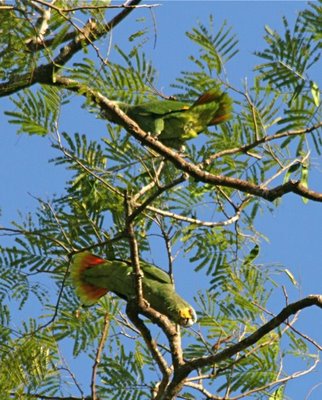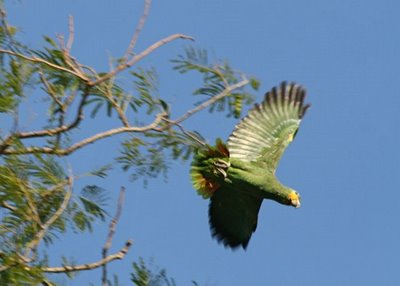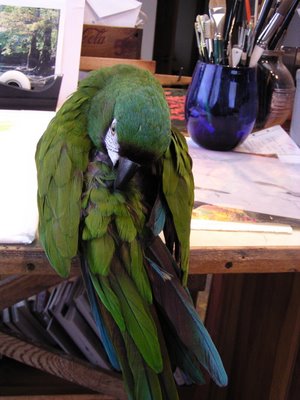On the Issequibo River
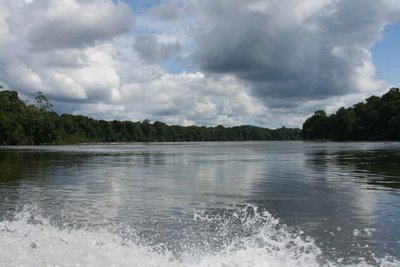
The Issequibo River flows right by Iwokrama Lodge. It is an absolutely gorgeous river, clear of water and abundant in life.
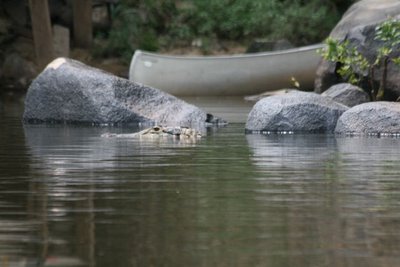 This is Sankar, a huge black caiman who hangs out right by the dock. He gets fed. I don't know if you can strike a deal with an 11-foot caiman, like: we'll feed you if you won't eat us. Can you work something like that out with a giant reptile? Is it capable of knowing you shouldn't eat the people who bring you chicken scraps? Probably. Anyway, Sankar hung around like a dirty shirt, floating like a hopeful log just off the dock.
This is Sankar, a huge black caiman who hangs out right by the dock. He gets fed. I don't know if you can strike a deal with an 11-foot caiman, like: we'll feed you if you won't eat us. Can you work something like that out with a giant reptile? Is it capable of knowing you shouldn't eat the people who bring you chicken scraps? Probably. Anyway, Sankar hung around like a dirty shirt, floating like a hopeful log just off the dock.We took a few boat excursions in open whalers to see what there was to see. One of the most fascinating birds we found was the black-collared swallow, Atticora melanoleuca. This diminutive bird nests in crevices in river rocks, which would seem to put it at great risk in the face of fluctuating water levels. On the bright side, there's not much that's going to swim across a swift-flowing river and prey upon their eggs and young, especially far back in a narrow crevice. I should think it would cut down on the snake predation, especially. I like this picture because it shows the great big, deeply-forked tail--such a surprise on a bird that otherwise looks a lot like a bank swallow.
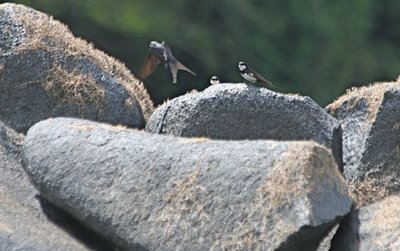
I decided to stage a shot of me reading Bird Watcher's Digest in the boat. This is a tradition with Bill and me, staging such shots, just to show that BWD goes around the world.
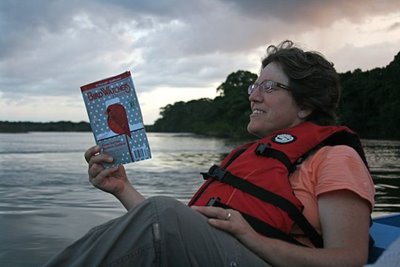 Photo by Mike Weedon. See, Mike, I credit your photos.
Photo by Mike Weedon. See, Mike, I credit your photos.That was so much fun, we staged another of me reading BWD in a bar on the Issequibo River. One night we wound up in a very funky, cool little bar within shouting distance of the lodge. There, we got pretty snookered on rum and vodka mixed with Orange Crush, because they were out of fruit juice. This is something that I would not even consider drinking at home, but it actually tasted sort of not too horrible in this little bar, because it was so cute and friendly there. They had a videotape playing on the television. First Anne Murray gave a concert, and then Kenny Rogers gave one. Then Anne Murray, then Kenny. Then Anne, Kenny, Anne...The tape was probably about thirty years old, and they probably know every single song by heart, but that's what they had. This is what I look like on vodka and Orange Crush.
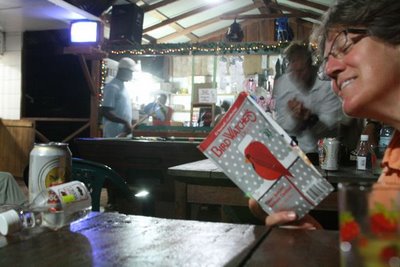 Photo by Kevin Loughlin
Photo by Kevin LoughlinI wish you could see Kenny on the screen but you can't.
After that, we went out spotlighting wildlife, but we probably didn't see near as much as we could have because Weedon and I started talking about Cockney rhyming slang and other ridiculous things and we laughed too much. I took one picture of a large frog they call mountain chicken. Why you would call a frog "mountain chicken" I have no idea, because it lives in the river.
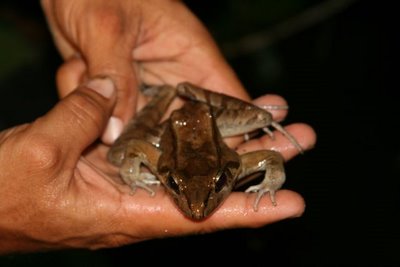 Sadly, this is the only photo I took that night.
Sadly, this is the only photo I took that night.The next morning, our guides Ron and Asaph sat discussing something, probably what they ought to do about the loud, disruptive people in this press group. Asaph is recommending that they wad up a sock and then put a little duct tape on my mouth, and Ron just thinks they should cut me off on the vodka and Orange Crush.
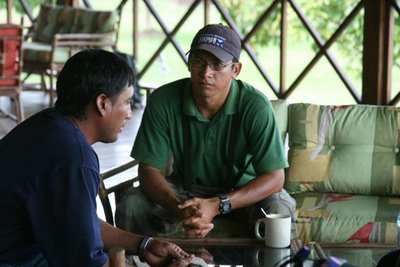 More adventures anon.
More adventures anon.Labels: Atticora melanoleuca, birding in Guyana, black-collared swallow, Guyana South America, Issequibo River, Iwokrama Reserve

